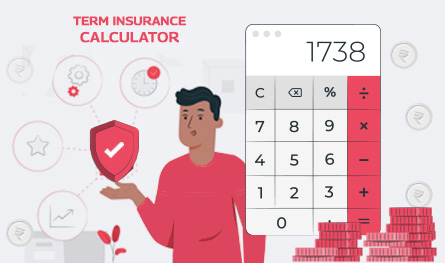What is the 80% Rule in Homeowners Insurance?
.jpg)
For a homeowner, insurance acts as an essential part wherein the protection of their assets is ensured. In this regard, appraisals in real estate work in tune with something called the 80% rule that is used for selecting a policy and at a rate. Loss can become an absolute if one cannot fathom what homeowner insurance is. This blog will discuss the range of the 80% rule and how it affects your premium.
.jpg)
Understanding the Basics of Homeowners Insurance
Homeowners insurance is supposed to be a protection over the investment of one's property and belongings in the house. The major types of coverage will include the following:
Building coverage: Building coverage essentially serves two purposes: protection from damage from bad weather, robbery, and loss from fire against the home.
Coverage of personal property: This even covers items that include gadgets and furniture.
Liability Insurance: Liability insurance protects an estate agent from medical and legal liability in case guests get hurt inside the property.
Additional Living Costs: Most policies will pay for temporary accommodation. At the same time, the house is being repaired if unforeseen circumstances make it uninhabitable.
Understanding homeowners insurance valuation is crucial when buying a house. The most popular forms of valuation include:
Replacement Cost: This kind of replacement cost does not take substitution into account depreciation for the replacement of destroyed items.
Actual Cash Value: It considers depreciation and hence pays out less than at replacement cost.
Any person insured by any homeowners policy should know at least these basics. After that, they will be able to defend themselves and decide what insurance they need.
What is The 80% Rule?
The 80% rule in home insurance prevents penalties. After the homeowners' insurance coverage requirements, it was said that it has to be at least 80% of the cost of rebuilding your home. For example, in the real world, the reconstruction of your house would require $30000, while you get $240,000 in coverage. So, you would at least have some shield in the event a specific disaster demolished your house.
If you don't meet this rule, you might receive less money for claims. This means you could pay more out of pocket for repairs or rebuilding. Homeowners follow the 80% rule to protect their investments and avoid big losses.
Critical Attributes of the 80% Rule
Goal: The 80% rule ensures financial safety during disasters. It encourages buyers to get enough insurance to avoid total loss.
Penalties for Low Insurance: Homeowners who don't meet the 80% rule get less claim money. This leads to high personal costs.
Value of insurance: One can emphasise the value of knowing the value of a home. This assists in determining the appropriate restriction. This facilitates home reconstruction, alleviates the pressure of finances, and ensures protection.
The 80 per cent rule assists property owners in preventing underinsurance and guarantees that their investment is protected.
An Example:
Stipulating the cost of 350,000 dollars for the least cost of replacing a residential structure,
Minimum coverage = 0. 80 * Measure of Loss Recovery Cost.
The minimum coverage required is the value of a house 350,000 * 80% = 280,000.
How the 80% Rule Affects Your Insurance Premium
The 80-20 rule or the eighty percent rule bears some council practice on pricing affording to; and is most applicable on home insurance. Index this: "To make sure that the house will never be underinsured, homeowners should get insurance that covers more than 80% of the home's replacement cost." This knowledge will prevent you from receiving unwelcome financial losses when making claims.
The High Price for an Additional Cover
Bear in mind you are most likely picking a higher premium if you select to have a home coverage for 80 per cent or above. This is simply because your insurance is insuring higher risks as such ensures loss is not probable. But that will raise the amounts of premiums that will be payable on a monthly basis.
Reduced Coverage Heightens the Risk of Underinsurance
On the other hand, you expose yourself to a serious risk if you decide to insure your house below the 80% threshold. In this case, a disaster could greatly reduce any claim. With this coverage of $350,000, you will only receive that amount in the event your property requires replacement at $500,000.
It depends on how your coverage compares to the minimum amount needed. It could be expensive to make repairs. We need to understand the difference between the home insurance replacement cost vs. actual cash value. Actual cash value considers depreciation and may award less. A replacement cost is the exact money to rebuild or repair your home, excluding depreciation. The 80% rule ensures you're always ready to buy a new house. It covers unexpected events. This means having peace of mind and financial security.
Implications For Violating the 80% Rule
Failure to qualify for homeowners insurance can result in serious consequences of not meeting the 80% rule. Understanding those implications is, therefore, necessary to ensure proper protection against future losses.
Settlements of Claims Reduces
The most important result of violating the 80% rule is lower claim payments. Suppose a loss occurs, and it becomes evident that you are underinsured. In that case, your insurance company can prorate your refund. It will reflect the ratio of your actual coverage to what was needed.
Financial Burden
This puts a great burden on the homeowner. They must repair their property after a disaster. Ignoring the 80% rule could cause too much damage. If so, repairs would exceed the insurance payout. If prepared, it may turn into unseen costs that affect a person's budget.
Higher Risk When Filing Claims
Another problem is that claims processing becomes riskier if insurers suspect underinsurance. Then, insurance companies might examine claims if they suspect low coverage. This scrutiny adds stress, delays processing, and can lead to disputes over payouts. Here is a table that can help illustrate these effects better:
Coverage Level |
Replacement Cost |
Required Coverage (80%) |
Claim Payment (if total loss) |
INR 200,000 |
INR 300,000 |
INR 240,000 |
INR 200,000 |
INR 240,000 |
INR 300,000 |
INR 240,000 |
INR 240,000 |
INR 280,000 |
INR 300,000 |
INR 240,000 |
INR 280,000 |
Owners residing in the floodplain are required to maintain Insurance for at least 80% of the property’s replacement cost. This prevents the assessment of fines and guarantees payments in a claim.
This provision is vital. Lending for repair and rebuilding is secured so that homeowners can reconstruct or fix their properties following a disaster. This ensures that people will not wake up one morning gasping from big losses that they cannot handle.
To estimate the insurance, you should take the replacement cost of your home and divide it by 0.80. For example, the minimum recommended coverage for your home if it is worth $400,000 is $320,000.
We deny your claim for total loss or damage due to your failure to meet this criterion. Your reimbursement may decrease based on how much you lack in coverage.

Author Bio
Paybima Team
Paybima is an Indian insurance aggregator on a mission to make insurance simple for people. Paybima is the Digital arm of the already established and trusted Mahindra Insurance Brokers Ltd., a reputed name in the insurance broking industry with 17 years of experience. Paybima promises you the easy-to-access online platform to buy insurance policies, and also extend their unrelented assistance with all your policy related queries and services.
Other Life Insurance Products
Latest Post

If you think of life insurance, chances are you are picturing something people buy in their 30s or 40s. But what if you are 65 or older and just getting started? The good news is that you are never too late. Whether you are thinking of easing the financial burden on your family, covering final expenses, or simply leaving behind a legacy, there are life insurance options tailored just for you.
This article will be a guide to life insurance for senior citizens above 65 years, explaining why it is important, the type of insurance options, and how to get the right policy for you.


Have you ever caught yourself lost in illusions about your daughter's future events, such as her university convocation and first day at work? Her university convocation. When she embarks upon her initial job after graduation will be the day.


Let’s be honest – life insurance planning isn’t exactly someone’s weekend hobby. It is the financial equivalent of flossing: we understand its importance, but we tend to put it off. But somewhere between balancing work and life, you might realise you need to have a solid plan in place – just in case.


We all know that health insurance policies offer a long list of inclusions. However, exclusions are also a crucial aspect of every policy. Overlooking policy documents can surprise you with hidden clauses that you didn't even know existed. To avoid such unpleasant situations and unexpected expenses during medical emergencies, it is crucial to uncover hidden clauses your health insurance policy may contain. When you buy health insurance online, make sure to know all about the policy before signing the document.
From least known exclusions to waiting periods and conditions in the fine print, hidden clauses can affect your overall experience. To help you out, here are the top hidden clauses of a health insurance policy that you should know.

.png)
Lymphocytes, a kind of white blood cells, are an extraordinary army of defenders functioning in the bustling world of our immune system for our body’s immune defence. Let’s know about these mighty warriors who are continually waging war against invading pathogens, viruses, and microbes in detail.




